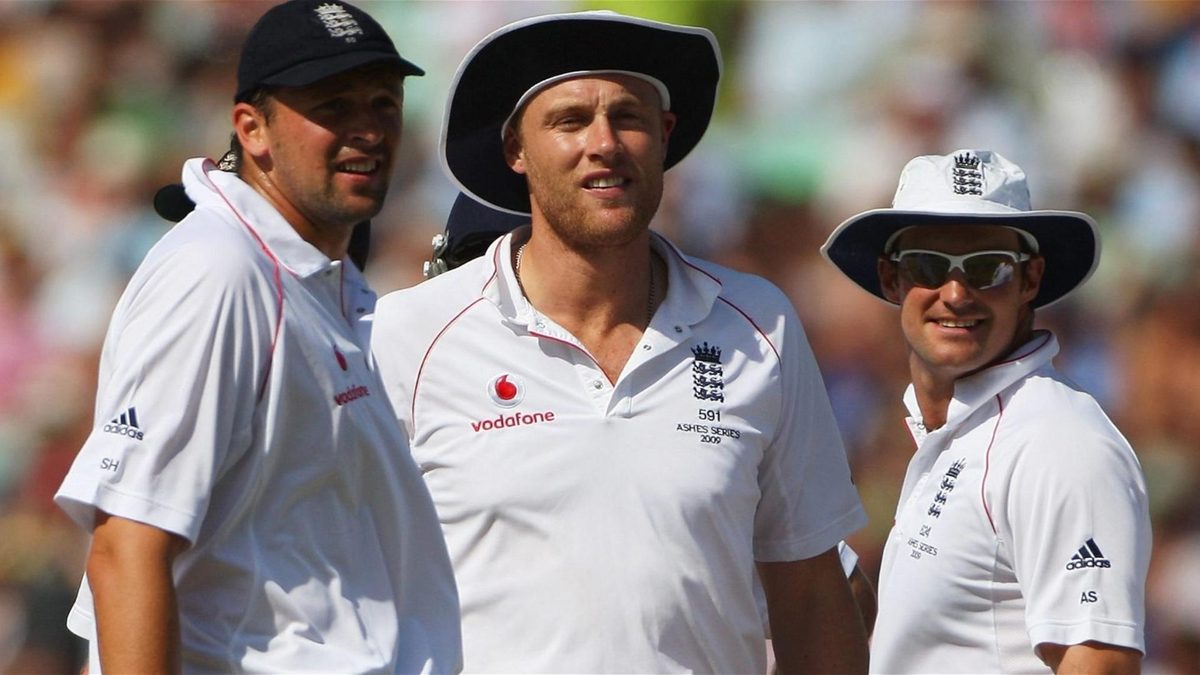
Not a single Englishman made the Wisden Test team of the 2000s
On the latest episode of the Wisden Cricket Weekly Podcast, Wisden Cricket Monthly editor-in-chief Phil Walker, WCM editor-at-large John Stern and wisden.com managing editor Ben Gardner joined host Yas Rana to pick out Wisden’s men’s Test team of the 2000s.
With only performances from January 2000 to December 2009 taken into consideration, the team was comprised of four Australians, two Indians, two South Africans, two Sri Lankans, and a Pakistani. Despite recording one of their greatest ever series wins in the Noughties in the ’05 Ashes, no Englishmen made the cut. However, several did come into the conversation at various points. Here are the players who came closest to making the cut.
Andrew Strauss
66 Tests, 5,093 runs @ 44.28, 17 hundreds, HS: 169
PW: I toyed very much with Andrew Strauss. He was the most likely Englishman in my XI, but he didn’t quite make the cut. He made his debut in ’04 and came into the side without an enormously persuasive first-class record for Middlesex, but he opened the batting and ran away with Test cricket in those early years. From ’04 to ’05/06, he was untouchable really. He was a world-class opener for two years, and his conversion rate in this period is outstanding. Sixty-six matches, 120 innings for 17 hundreds.
Opening bats, the more hundreds they make, the more games teams win. That sounds like a really trite thing to say, but you expect opening batsmen to get a few low scores, and when you get in you’ve got to make it count. Strauss’ conversion rate is right up there.
Kevin Pietersen
56 Tests, 4,799 runs @ 49.98, 16 100s, HS: 226
JS: I was quite interested in KP. Partly a bit like with Lara and a few others – he makes his debut in ’05 so [plays] half the decade. He would certainly be a candidate.
PW: Pietersen’s story, if you were to extend it by two years, to take it into 2011 and then he has that defining Australia away series under this belt, then his case becomes very strong indeed. [From] ’05 to ’09, averaging 49 and a bit – 16 hundreds from 56 games is a very good conversion rate, but maybe not the complete body of work we need for this task, so Pietersen doesn’t quite make the cut.
Graham Thorpe
43 Tests, 3,145 runs @ 53.30, 10 100s, HS: 200 not out
PW: Highest average for an English middle-order player in the period – Graham Thorpe: 53 and a bit. Pietersen, a tick under 50. I’m not talking about him [Thorpe] slipping into this side but it’s interesting that if you could tack on the early part of Thorpe to the latter part of Pietersen across the decade, then you’d have one hell of a player.
Matthew Hoggard
67 Tests, 248 wickets @ 30.50, 7 five-fors, best figures: 7-61
PW: He comes in at No.5 in terms of the wicket takers, but only seven five-fors. There would be a hell of a lot of three-fors and four-fors. This is what separates fast bowlers, they do different jobs at different times.
Stephen Harmison
62 Tests, 222 wickets @ 31.94, 8 five-fors, best figures: 7-12
PW: If you look at those two years [between 2004 and 2006], he was the best fast bowler in the world, but from Brisbane, November 23, 2006 onward it was a struggle for him. While he had good moments – he had a good moment against Pakistan at Old Trafford and came back nicely in ’09 in that Ashes series for his swansong at home – the truth of it is that after that golden two years he fell away a little bit. He was a ‘daysy’ cricketer. Some days he did, some days he didn’t, and that was the story of Harmison’s career really.
Andrew Flintoff
73 Tests, 3,645 runs @ 32.83, 5 100s, HS: 167
213 wickets @ 32.94, 3 five-fors, best figures: 5-58
JS: I did write Flintoff’s name down. He clearly didn’t do it for long enough, but when you’re looking at career’s with a bit of perspective and comparing against peers, it’s a pretty impressive effort really. Kallis is obviously way out in front. I wrote Flintoff’s name down, I wrote KP’s name down, and no one else. I wasn’t considering any pace bowlers, for example.








